February 16 Auroras
Itasca County, Minnesota
Due to a fair bit of solar activity (a lot of M-class flares with only small CMEs plus maybe a bit of a coronal hole), the solar wind conditions became a bit unsettled. Magnetic field strength had increased to 20 nT, but in the evening, the magnetic field vector was mostly pointed north. Rather than sit in front of my computer, continuously hitting the refresh button on my browser to see when then it might point south, I decided to go to bed early (9:30) and get some sleep. If Bz suddenly went south, it would take a couple hours for the auroras to crank up anyway, and if that ended up being the case, given the timing, it would be a sleepless night, so I decided to sleep now while there were no auroras. If I really needed the sleep, I would stay asleep and miss the auroras if there were any, but my health is more important than my photography. If I wasn't very short on sleep, I'd probably wake up and check the solar wind.
Around 11:30, I broke from my sleep long enough to reach over and check my phone. Bz had dropped only briefly to -17 nT, but it had been south long enough to get the auroras going, so I hopped out of bed and got dressed. I was out the door in about 10 minutes. I glanced to the north from my house and thought it looked bright enough for auroras to be there. I drove to the north side of town and looked for the auroral band when I passed McKinney Lake.At first, I thought there might be nothing, but I looked a little longer, and there it was. It was a nice, narrow band at least 10 degrees above the horizon. I could also see it through the windshield as I drove out of town. I decided to stop at Peterson Road because this band could erupt into a substorm fairly quickly.
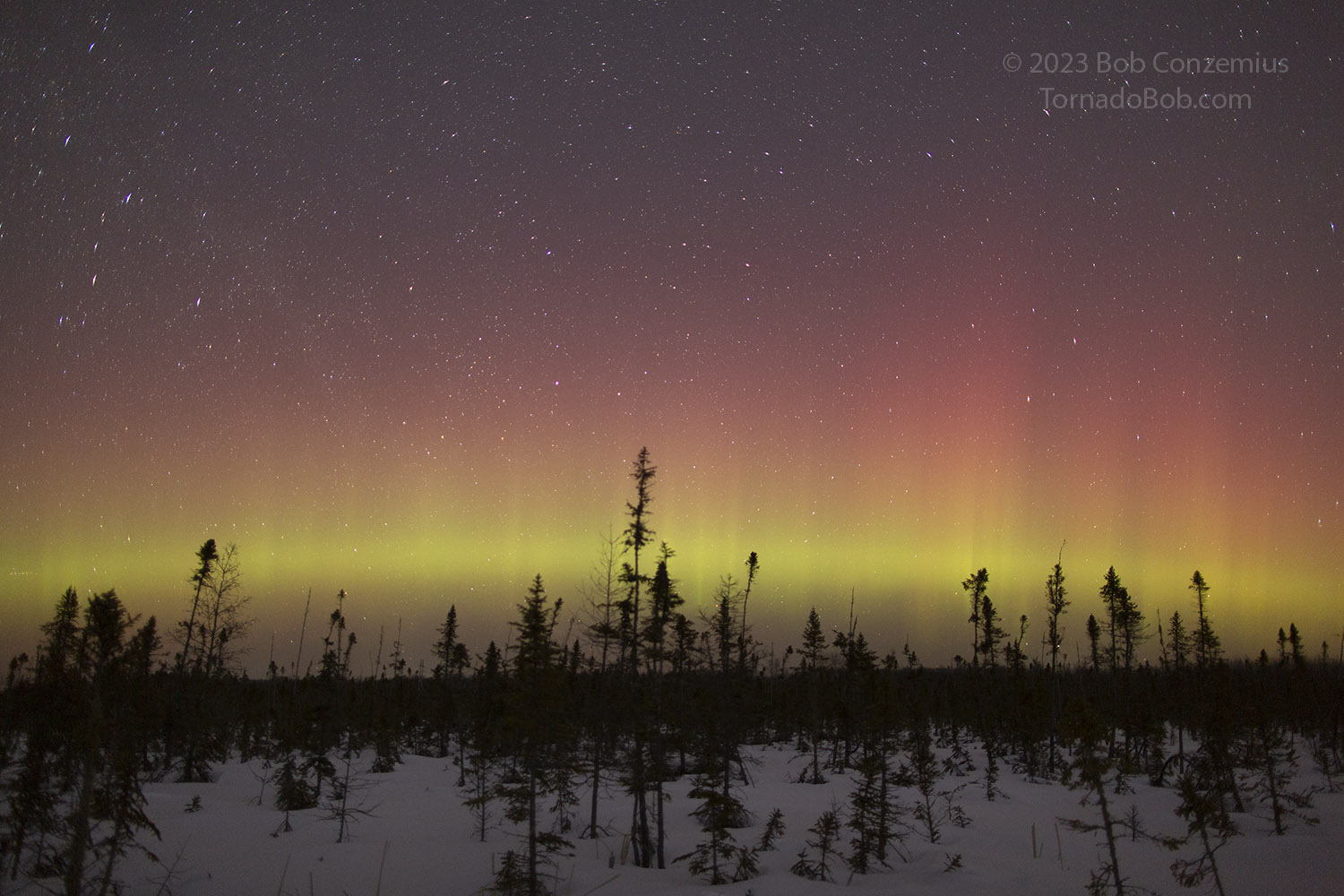 |
| Auroras at Peterson Road at the Grand Rapids city limits. |
I took a few photos, but I wasn't satisfied with the contrast. I looked at the sky around me. The glare of city lights just to my south was brightening up the sky, and tonight, I think this glare must have been reaching a bit north of me. I had been here before on a calm winter night on one other occasion, when the auroras should have looked really bright (similar Bz almost to -20 nT), and the auroras just were not very bright, and now, the contrast was pretty low again. I needed to move north to darker skies. I thought I'd try Wabana Lake. I also needed to be prepared for a substorm to start. I kept my eye on the auroral band as I drove north.
I made it to the boat landing, loaded up my gear, and began walking out onto the lake. My normal shooting spot is just beyond the end of a narrow point that extends out eastward from the north side of the landing. The point has tall trees growing on it, but these trees, owing to the narrow nature of the small peninsula on which they grow, do not completely block the view, at least in winter when I can walk out onto the lake. Normally, the auroral oval sits behind these trees, and I don't have any interesting compositions until I get to my shooting spot, where I have a much more open view to the north. However, the auroral band was right at treetop level, which made the compositions more interesting. I moved along, occasionally stopping to take photos.
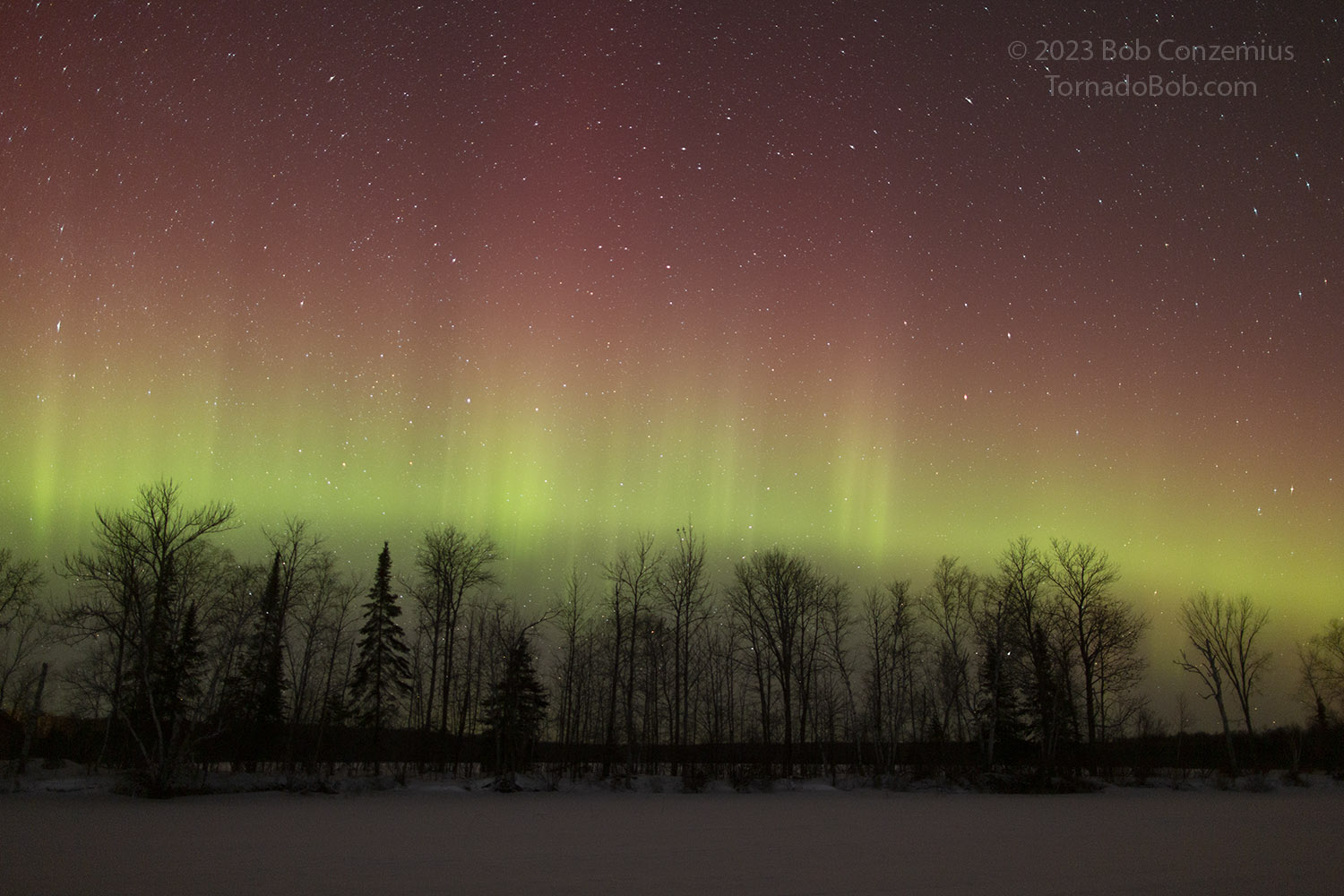 |
| The auroral arc is right at treetop level in my view. |
As I moved along, I kept on thinking the view a little farther down the point was more interesting than in my previous picture, so I kept stopping to take more pictures, delaying my arrival at my shooting spot. Soon, the arc began to brighten, and taller columns of aurora began growing. I also noticed some other patches of bright auroras were starting to fire up farther north, closer to the horizon. The substorm was now starting! I better set up both cameras right now! I set one camera, with a 16-35 mm lens, set at 16 mm, pointing straight north. The camera that I had been shooting with had a 24 mm lens, and I pointed it northeast to where the auroral arc dipped into the horizon. I photographed quickly as the auroras brightened.
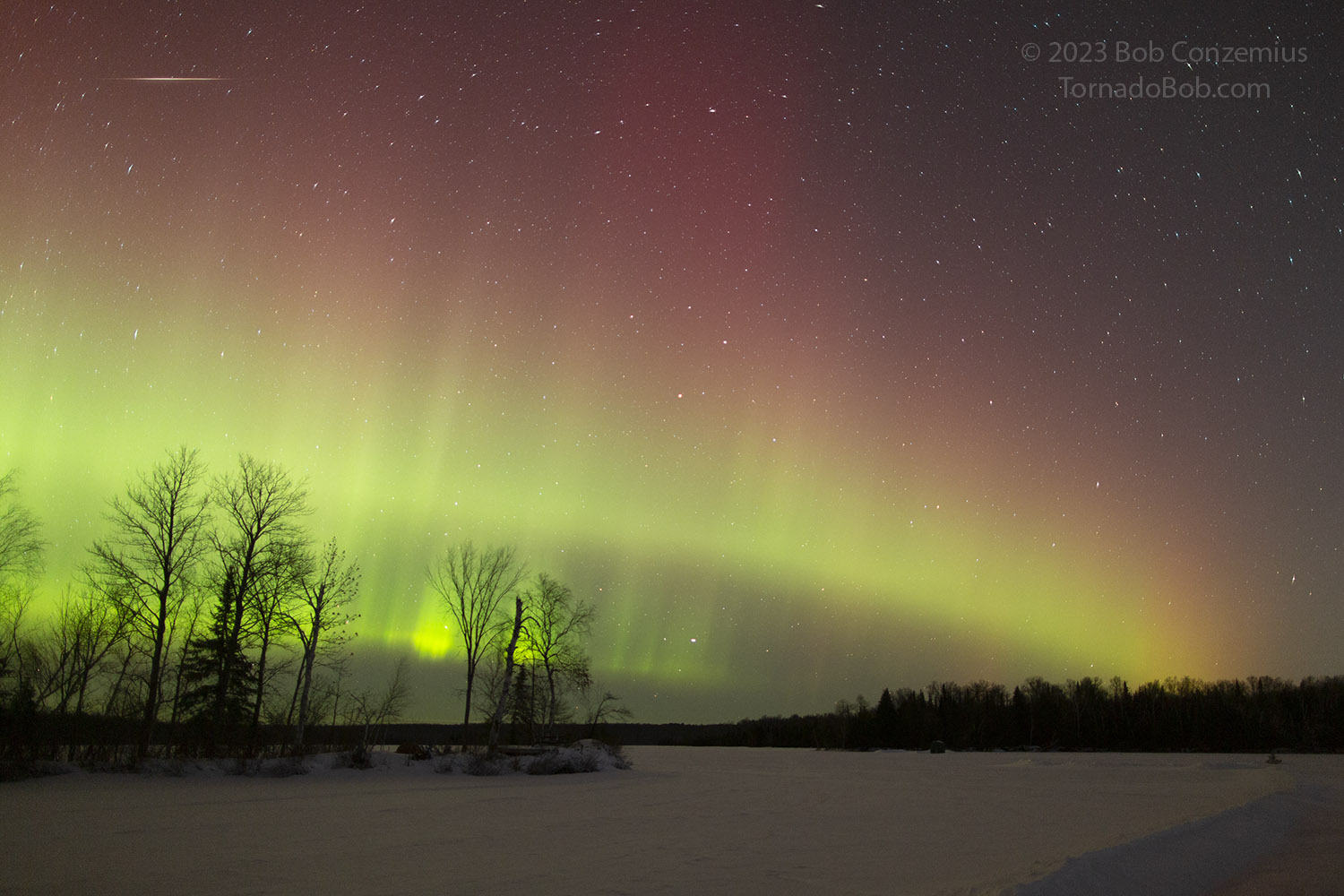 |
| Here is the view with a 24 mm lens (full frame), looking northeast, as the substorm was intensifying. |
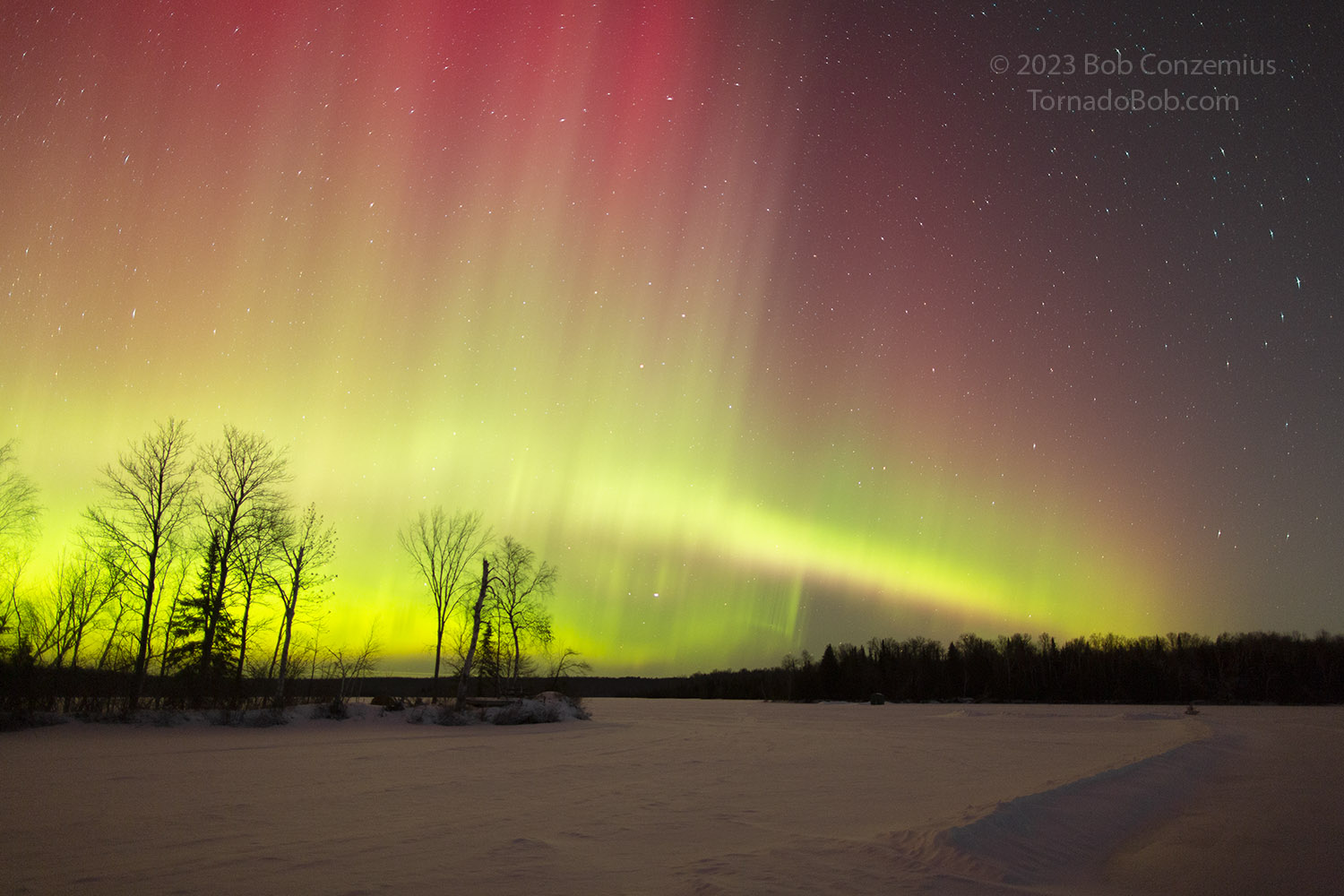 |
| All colors of the auroras are present now: greens (fast oxygen), reds (slow oxygen), and pinks (nitrogen). |
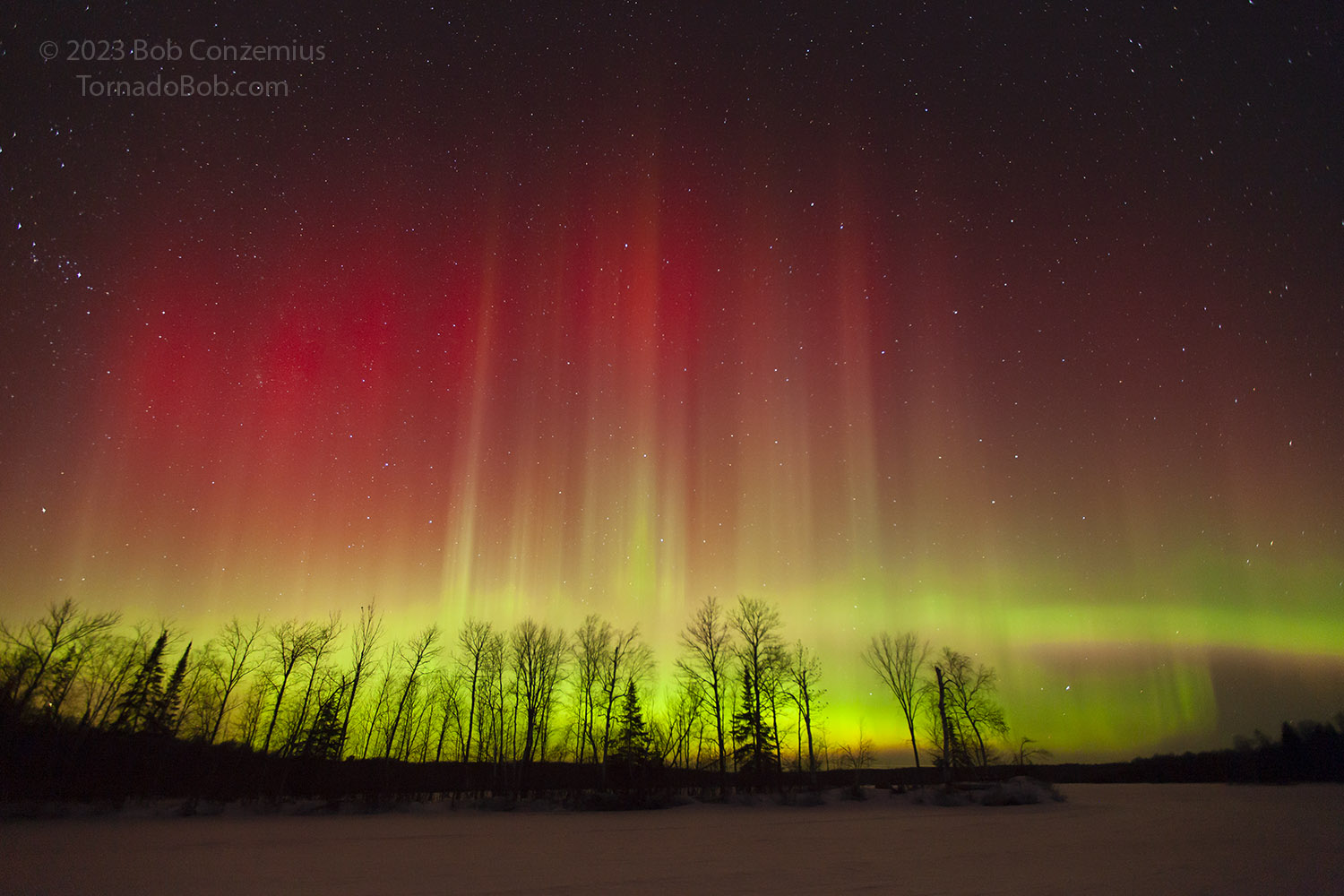 |
| Here is the view with a 16mm lens (full frame). |
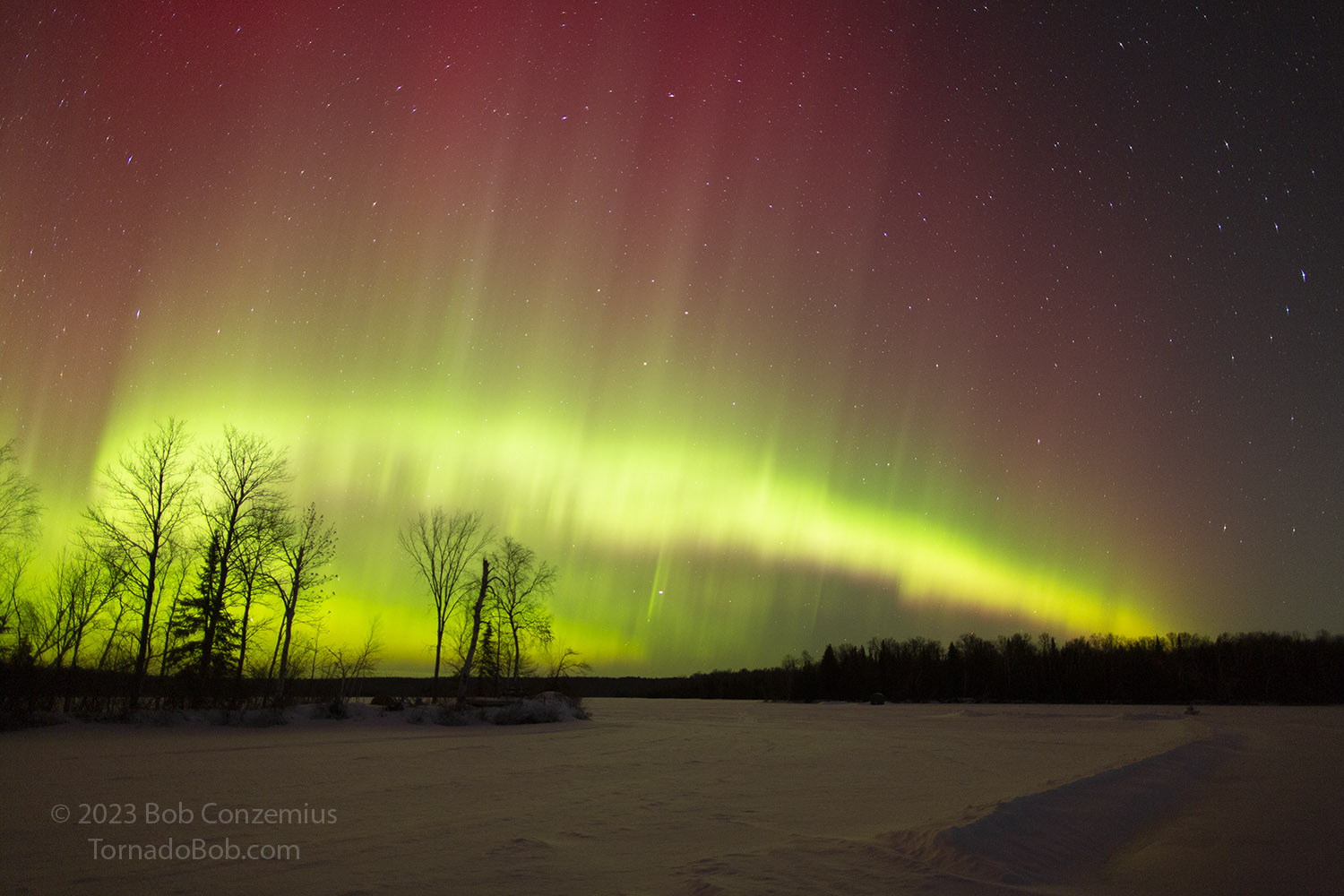 |
| Auroras take on a more circular shape. |
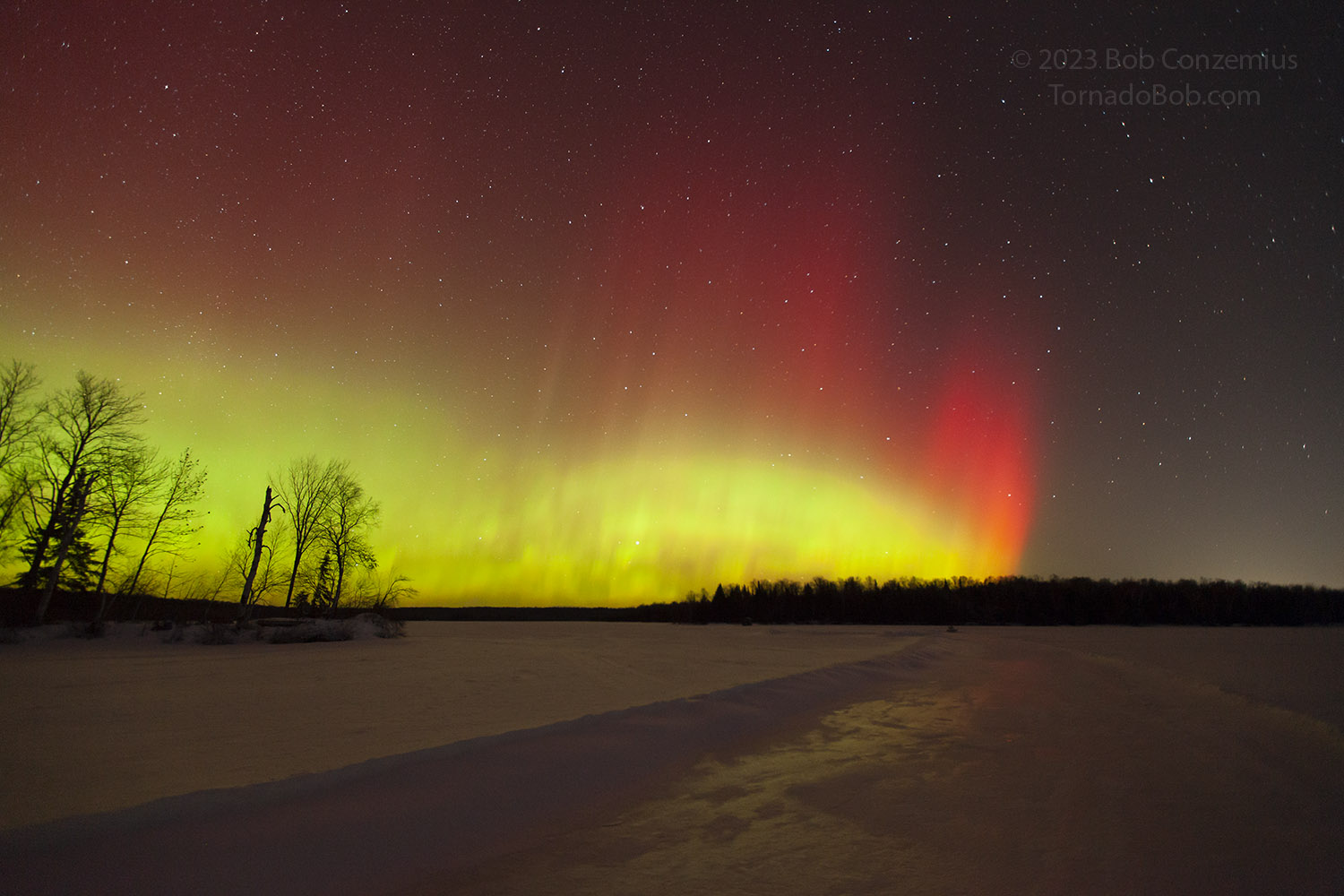 |
| Aurora Road. |
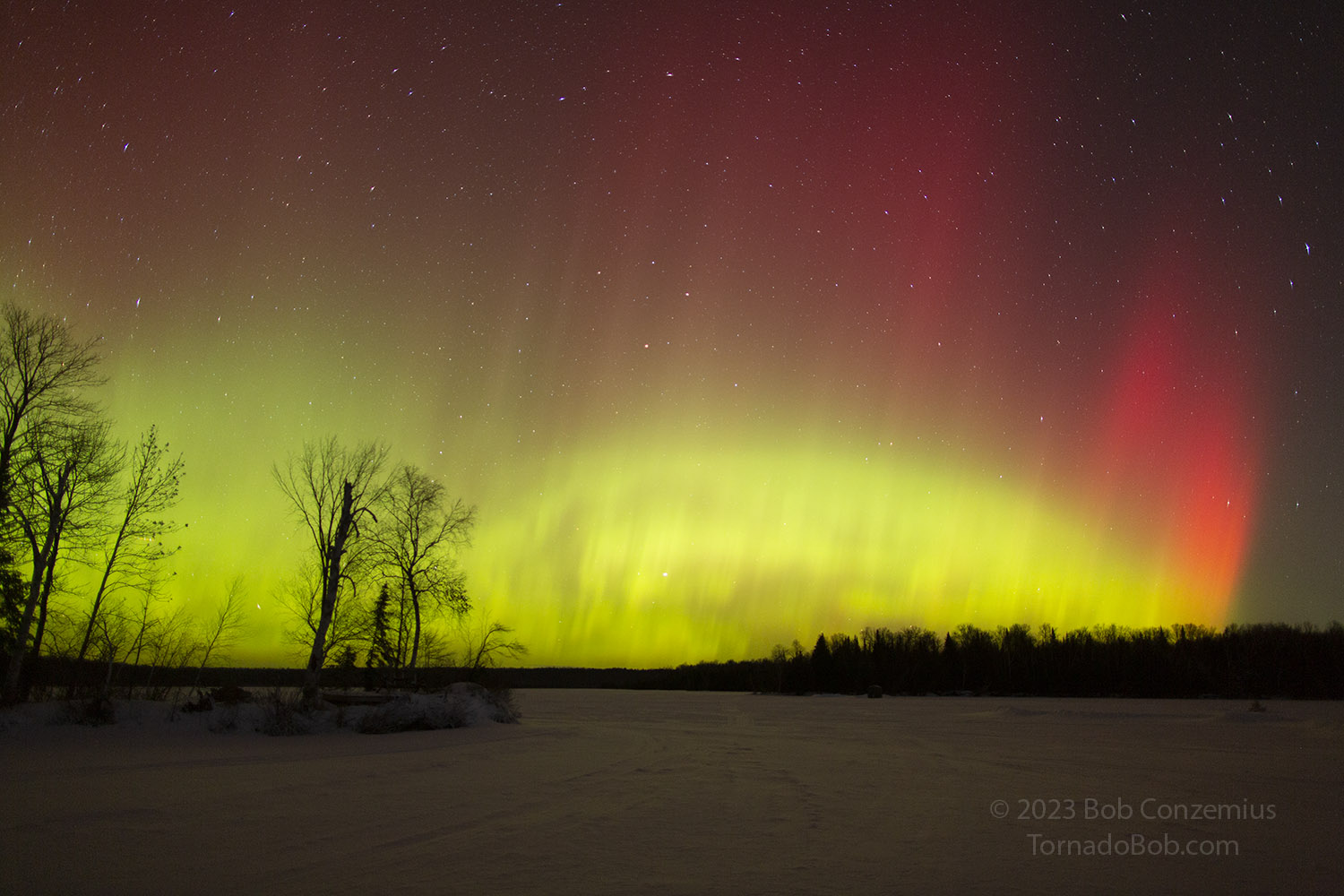 |
| The same time as above with the faster 24 mm lens. |
When things had calmed down a bit, I decided to experiment and point my cameras elsewhere. To my west, Orion was standing right on the northern horizon, so I shot that way. Also in that shot, you can see the southern boundary of the auroras. A subsequent shot looking directly north showed a relatively bright sky even where there were no auroral structures visible. I then walked across the lake and composed a couple shots with foreground objects I saw.
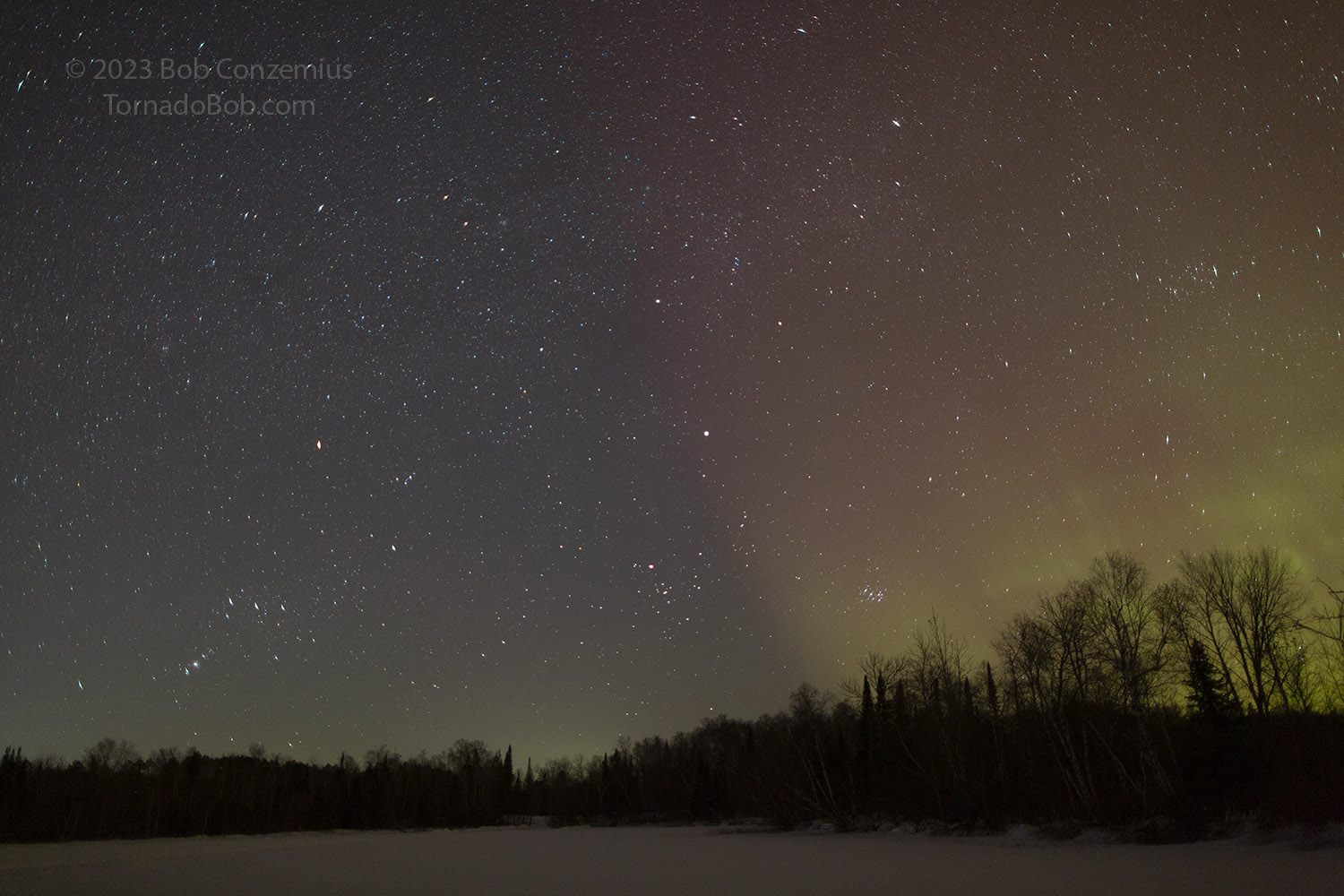 |
| The southern limits of the auroras. |
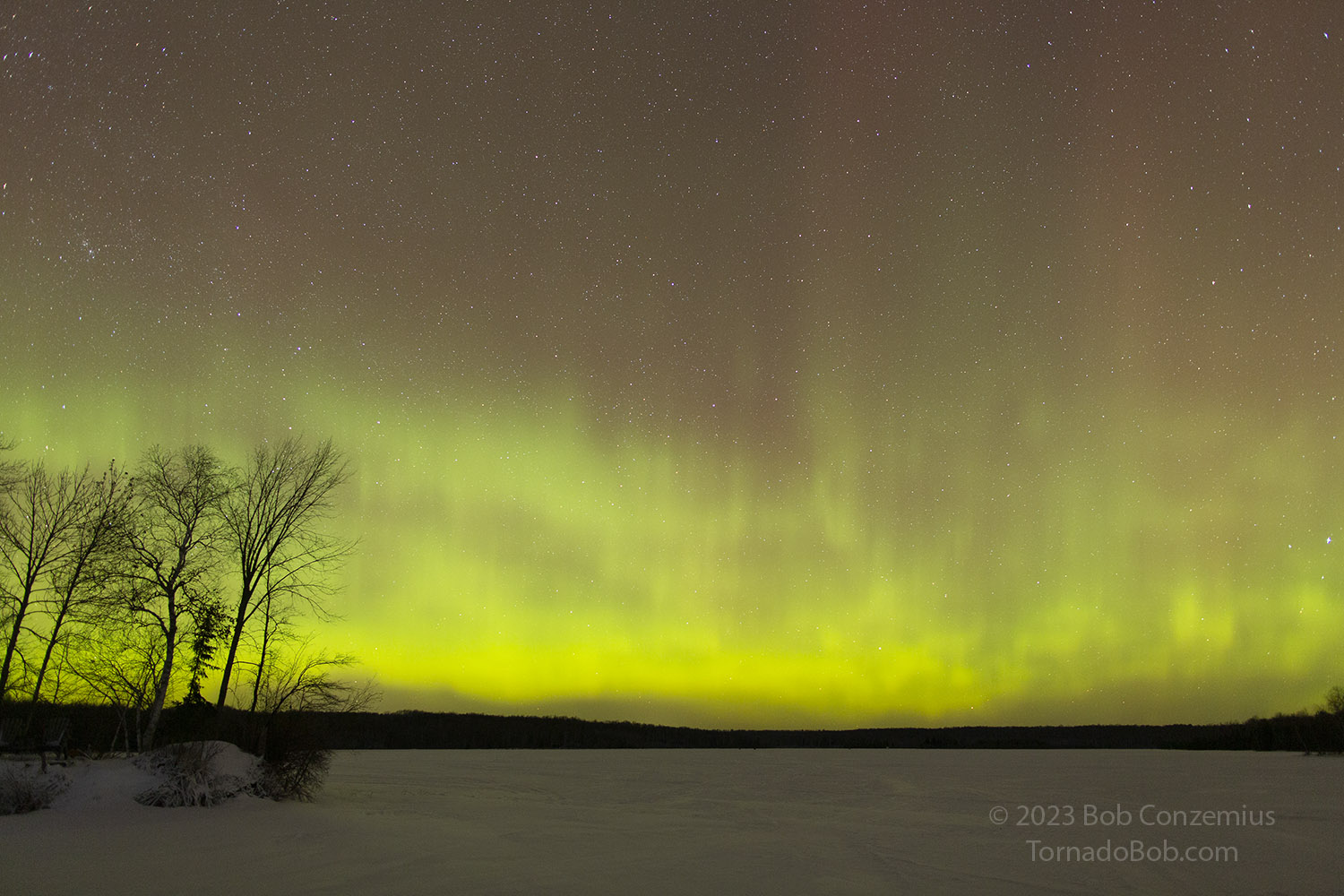 |
| Looking north, the whole sky is relatively bright, even where there are no structures visible. |
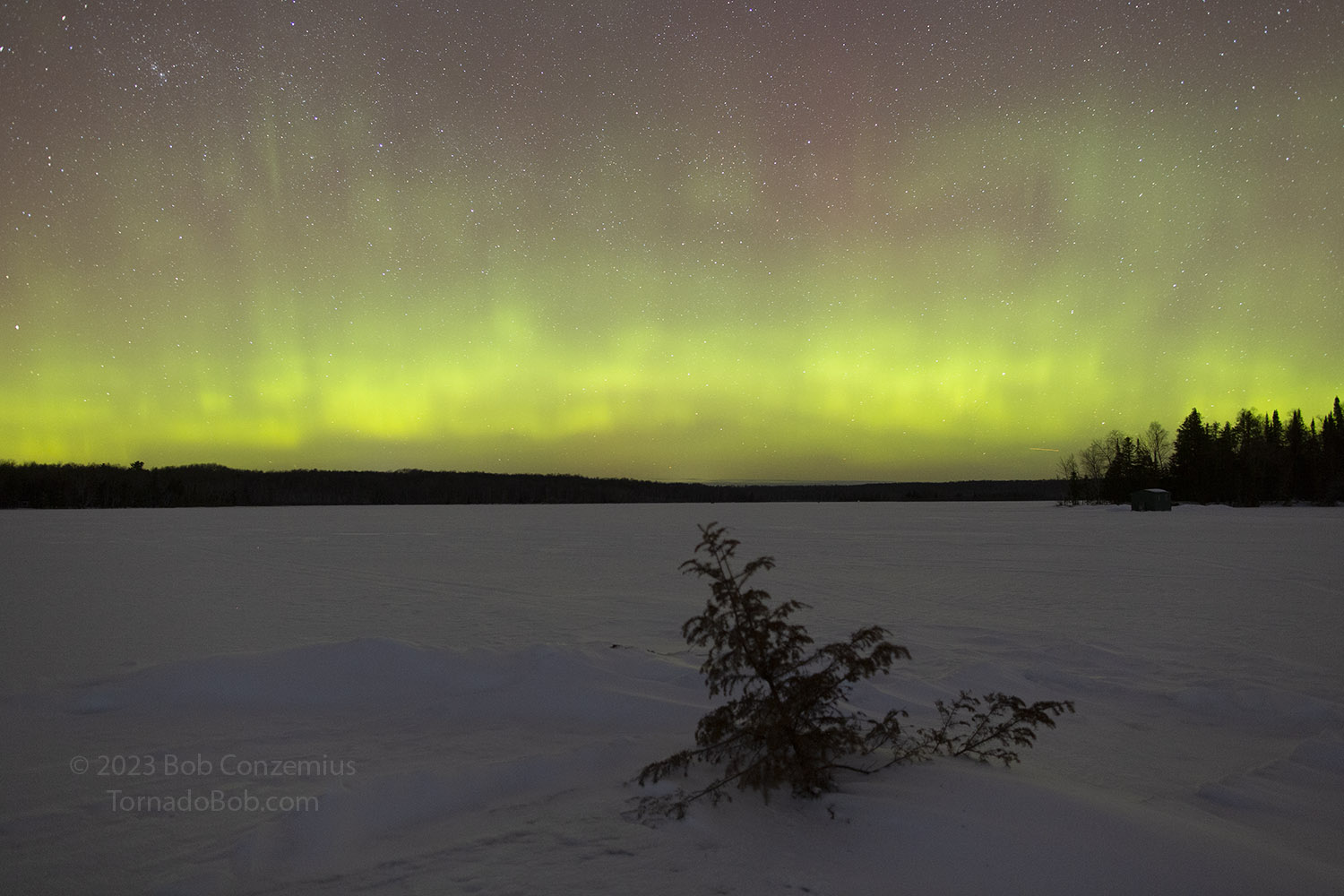 |
| A tree marks a former hole in the ice. |
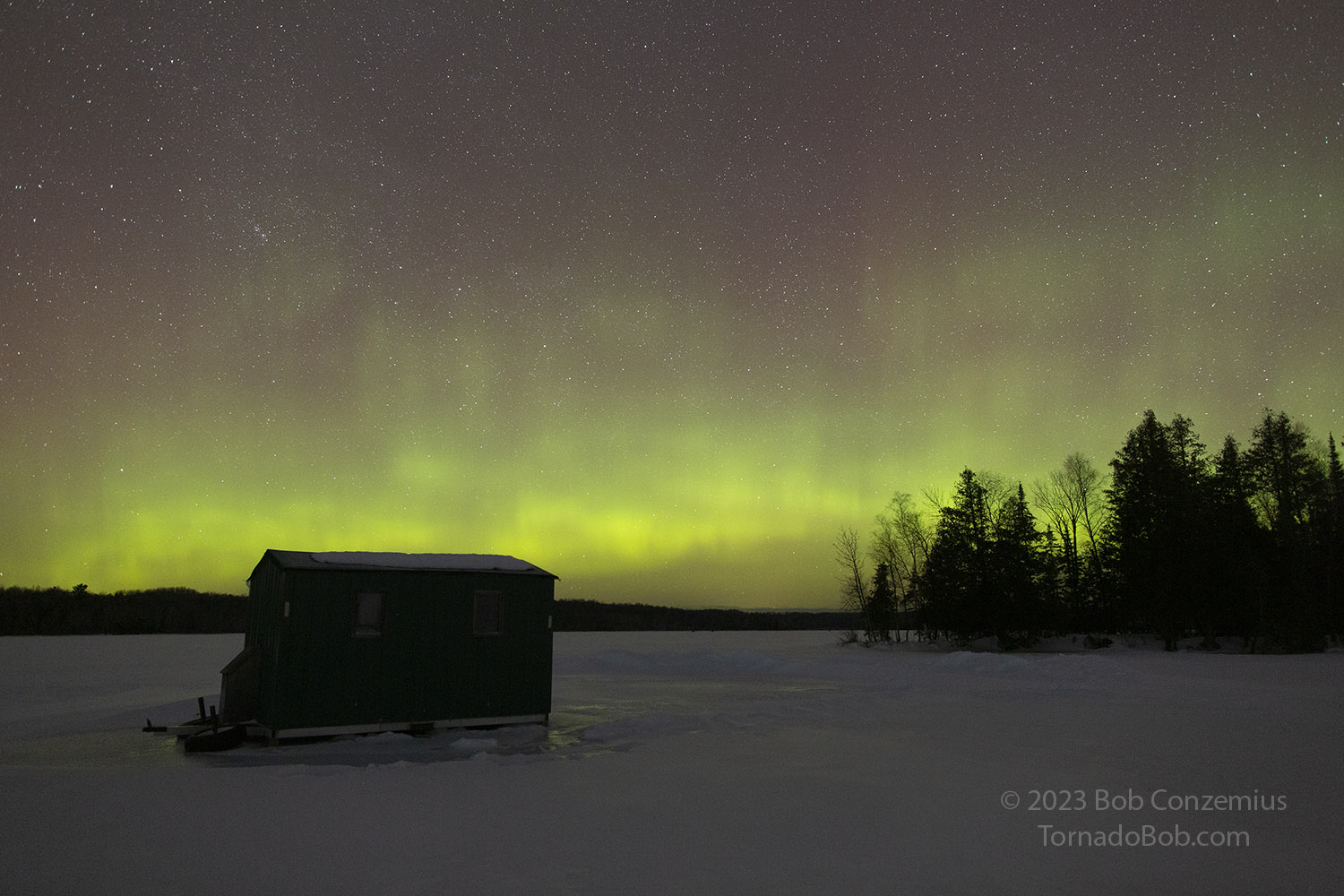 |
| An ice fishing house on the other side of the lake. |
Bz had been pointing back north again through all this activity, so I decided to walk back to the car and warm up a bit. Once I was there, Bz dropped south again, so I waited for another brightening. The auroras had dimmed and retreated to the north, but I was sure they'd be back. It also happens, that during this interval, some low clouds snuck in. I had no idea they were present until I checked the surface weather map to see what temperatures were like in northern Minnesota. It revealed some areas of overcast conditions. The satellite loop confirmed some low clouds. They are hard to see on IR satellite because their temperature usually matches the ground temperature pretty closely in winter. It also looked like the cloud layer was pretty thin and patchy. My observations confirmed this. At times, I saw stars, but in some parts of the sky, they disappeared.
After an hour of southward Bz, I decided to go back out, despite the clouds, and shoot again. There was a chance they would clear, so I pointed the camera north across the lake and started shooting. Sure enough, a clearing line approached, and as the auroras gradually brightened, the clearing line moved southward along with the auroras. I soon had mostly clear skies again, illuminated by auroras.
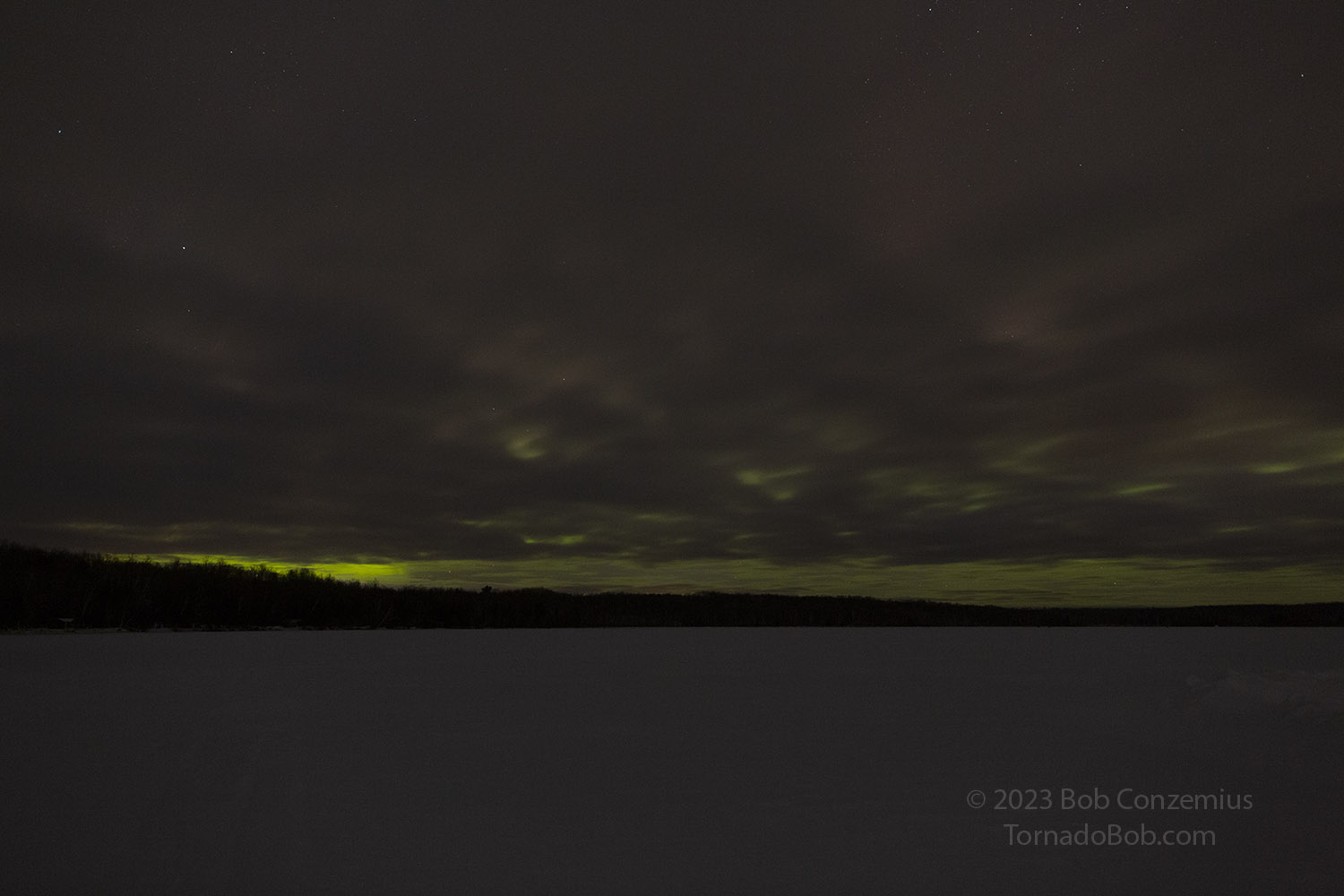 |
| Clouds are covering most of the aurora. There is an apparent clearing line on the horizon, convincing me to wait. |
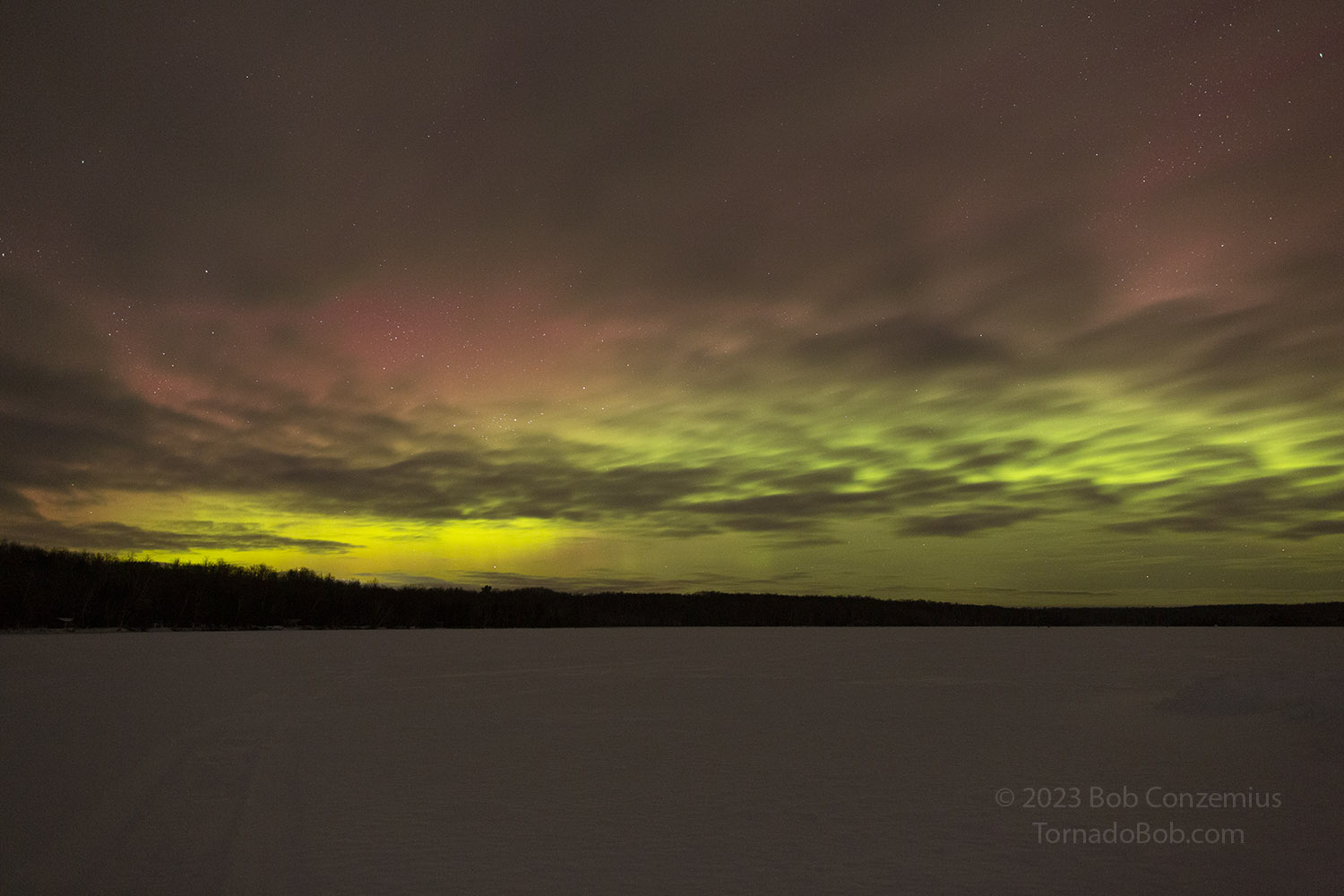 |
| The auroral oval brightens as the clouds retreat. |
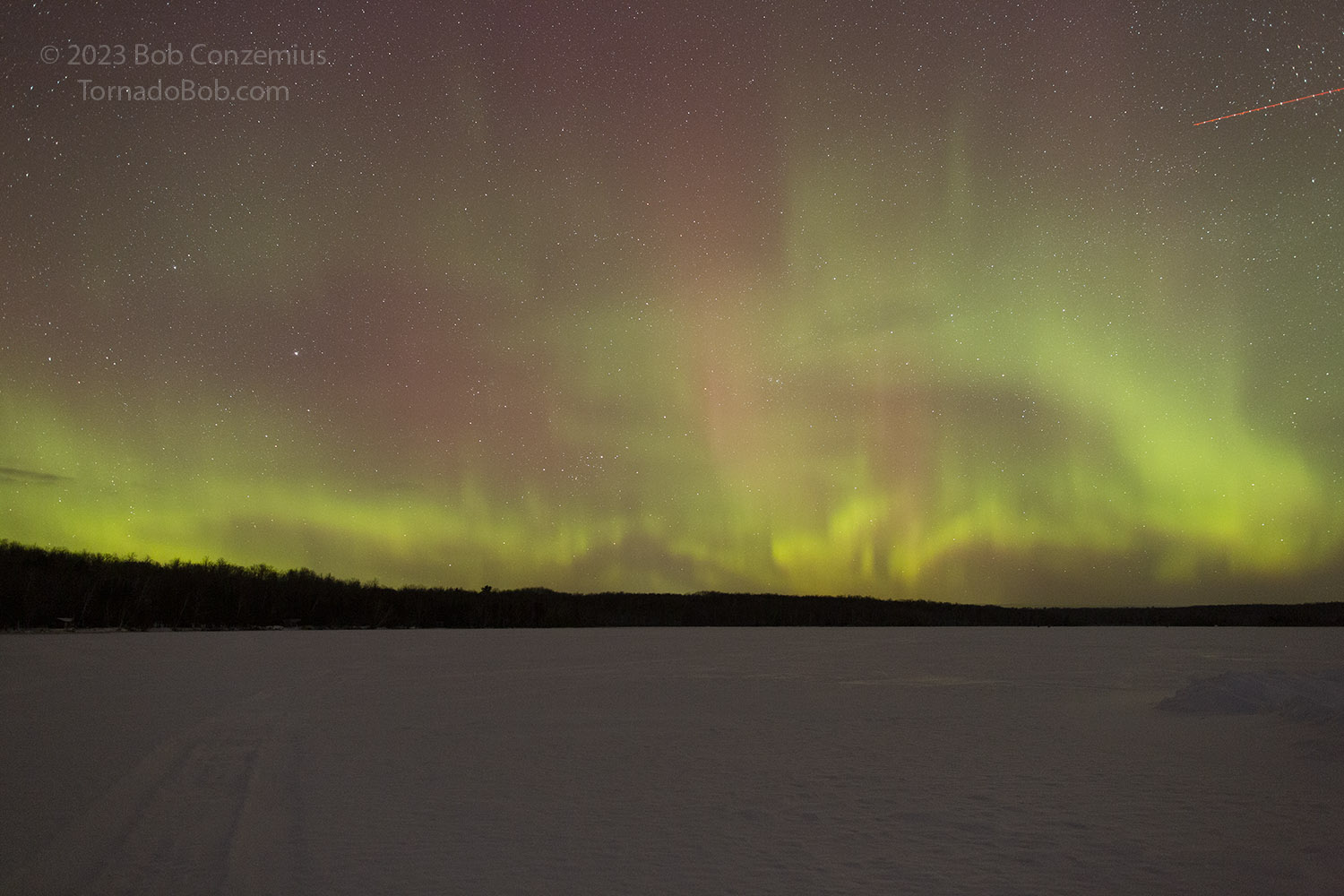 |
| A look at the second substorm after a period of cloudiness. |
I continued shooting until around 4:00 AM. The auroras were settling down again, and they would not likely perk up again before twilight started. Now was the time to drive home and get some sleep before my work day began around 8:30.
Back to Auroras | Home














